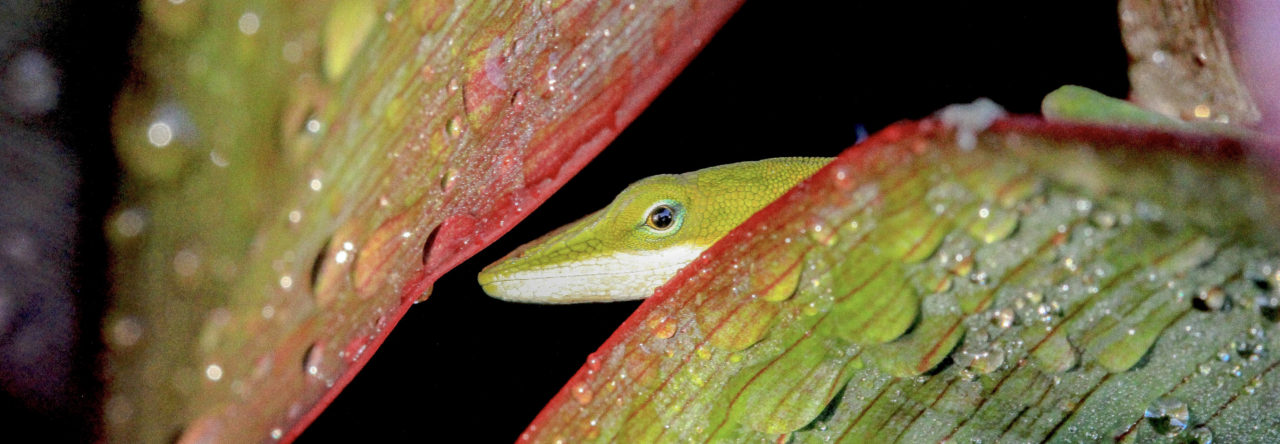Small islands are great systems in which to study evolution, in part because their isolation and simplified landscapes makes them amenable to experimental studies. For example, previous experimental work on Anolis sagrei in the Bahamas by Losos et al. (1997) and Kolbe et al. (2012) found evolutionary changes in hindlimb length driven by adaptation to structural habitat over only a few years.
Hanna Wegener, a Ph.D. student studying with Jason Kolbe at the University of Rhode Island, wanted to know if morphological differences associated with habitat use also manifest in natural (rather than experimentally introduced) populations of Anolis sagrei from the Bahamas. She examined genetic (microsatellite) and morphological variation from male and female A. sagrei on seventeen islands in the Bahamas. Despite the islands being separated by very small geographic distances (no more than three kilometers and typically only a few hundred meters), populations on the islands were genetically differentiated. Her genetic analysis further found high levels of inbreeding on each island.
Unlike the findings on the experimental islands, Hanna did not find any correlation between perch diameter and hindlimb length. She did find that female density was high on the islands, and that density correlated strongly with head length and injury frequency, suggesting that competition influences morphological differentiation on these islands. Overall, Hanna found that morphological patterns varied considerably among islands and among males and females. She suggests that this variation is due to stochastic effects on small islands, namely genetic drift, due to the extinction and colonization dynamics in response to hurricanes.
- SICB 2018: Revisiting the Fitch-Hillis Hypothesis in Mexican Anoles - January 8, 2018
- Evolution 2017: Urban Anoles Sprint Faster on Smooth Substrates - June 26, 2017
- SICB 2017: New Insights into Pre- and Postcopulatory Selection in Anoles - January 10, 2017



Leave a Reply